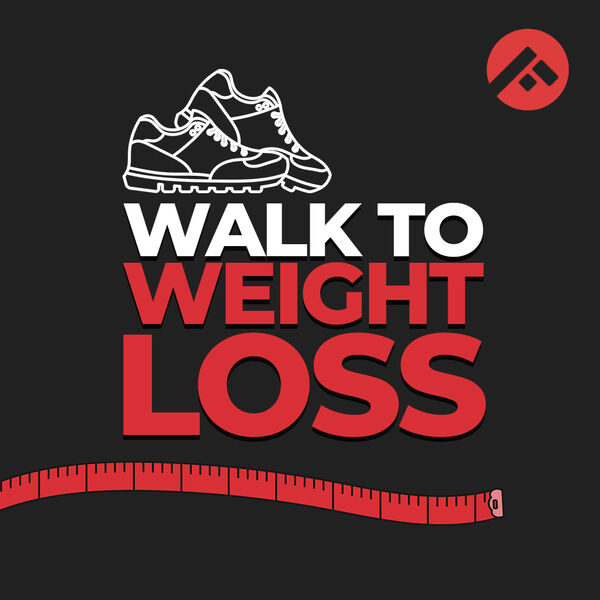
Types of Walks and How Fast Should You Walk

Walking offers countless benefits to people of all age groups. There are different types of walks that you can add to your training. It helps in burning calories, strengthening your heart muscles, controlling diabetes and arthritis, and boosting your immunity, energy, and mood, which all add to a healthy life. But all these benefits of walking are a function of walking speed, the surface on which you walk, and individual factors such as age, gender, height, and fitness level.
What are the different types of walks?
Walking is a low-impact aerobic activity with many variants to help you achieve your goals. So, let’s understand the different types of walking.
1. Leisure walking
Leisure walking or strolling is a recreational activity performed at a slow pace. It could include walking with your pet or just observing the nature around you. This activity is generally performed in a calm and relaxed manner. Walking at a slow pace tends to reduce the load on the knee joints and can be beneficial for people who are at high risk for knee injuries. It can be a good way for people to start a walking routine, and slowly build up their pace and exercise intensity. Slow walking may also help in relieving stress, recovering from other higher intensity activities like running and strength training, and feeling energized overall.
2. Brisk walking
Brisk walking is one of the most effective forms of cardio exercise, where you walk faster than your usual walking speed. It is a moderate-intensity cardio activity, typically performed at a target heart rate within the range of 50% to 70% of your maximum heart rate (MHR). Brisk walking on a regular basis offers many health benefits such as weight loss, improved cardiovascular health, and better management of blood pressure and blood sugar levels. It does not need any special equipment — all you need is a good pair of walking shoes and some music, if you wish.
3. Power walking
Power walking is an advanced version of brisk walking. This walk emphasizes on correct body posture with eyes forward, shoulders back, head upright and belly button pulled in to engage your core. The arms should ideally be bent at 90° and swing with opposite arms and legs going forward. Shorter strides are incorporated to walk faster. Sometimes, weights are also added for functional resistance to the ankles and hands. Power walking can help in weight loss, and managing blood glucose levels, cholesterol levels, and hypertension.
Some other types of walking include:
4. Chi walking
Chi walk specifically focuses on the form and is used to improve posture, strengthen core muscle, relax tensed muscles, increase flexibility, and attain cardiovascular fitness. In Chi walking, the body weight is in the center of the body rather than on the leading foot. So, when the movement initiates from the center, the core muscles are working instead of the muscles of the legs. This way your body is balanced and the core is engaged.
It involves mindfulness to focus on the alignment of the body and motivates participants to explore a spiritual way of workout. Chi walking can help in improved physical and mental mindfulness, the balance between upper body and lower body and flexibility of the joints, and in strengthening the core muscles.
5. Nordic walking
Nordic walking is like mimicking cross country skiing using Nordic poles. It is the kind of walk wherein you are brisk walking but using the poles to push your body forward. The poles engage the upper body, core, and legs in the workout due to the propelling movement. It helps to achieve balance and a faster pace on inclined surfaces. Nordic walking can help in losing weight, toning your muscles, improving bone and joint strength and cardio-respiratory health. It also acts as a brilliant stress-buster. Additionally, Nordic walk increases the strides, and so can be useful for patients with diseases affecting their gait.
Also read: Can Walking Help In Weight Loss?
How fast and how long should you walk for health benefits?
▪Intensity
To achieve health benefits by walking, it is recommended to walk at a “brisk” pace. Brisk walking is a moderate-intensity cardio activity.
Moderate-intensity:
According to the American Heart Association, the target heart rate while performing moderate-intensity activities is around 50%-70% of your MHR. One way to assess this is by doing the talk test — you should be able to talk but not sing during the workout.
Vigorous-intensity:
According to the American Heart Association, the target heart rate during vigorous-intensity activities is around 70%-85% of your MHR. At this intensity, while doing the talk test, you will be only able to say more than a few words without pausing for a breath. This zone is not for regular or recreational walkers and can be achieved only by doing race walking.
Maximum heart rate can vary from person to person, and depends on a variety of factors such as your age, the altitude at which you walk, genetics, fitness levels, and sex.
▪Cadence
Cadence is defined as steps covered per minute of your activity. Studies suggest that for most healthy adults, a walking cadence of ≥ 100 steps/minute was adequate to achieve a moderate-intensity workout.
▪Pace
The average brisk pace is about eight minutes to 12.5 minutes/km.
▪Duration
How long you should walk to reach your fitness goals would depend on your goal. But, on average, the Center for Disease Control and Prevention and World Health Organisation recommend performing at least 150 minutes of moderate-intensity physical activity per week, which accounts to 30 minutes of brisk walking for 5 days per week to keep yourself physically fit.
You can use devices like fitness bands, speedometers, pedometers, or fitness apps to measure your intensity, cadence, speed and other parameters while working out.
Conclusion
Walking, when done at optimum intensity, frequency, and duration can be beneficial to overall health and fitness. However, if you have any existing medical conditions or are on any medications, it is recommended that you consult your physician to obtain clearance before embarking on a workout routine. So, take some time out of your busy schedule, grab your walking shoes, and walk your way to a healthier life.
For more information, you can also listen to our Walk to Weight loss podcast.
References
1. Cronkleton E. What Is the Average Walking Speed of an Adult? Healthline. https://www.healthline.com/health/exercise-fitness/average-walking-speed (accessed Apr 19, 2021).
2. Target Heart Rates Chart. Heart. https://www.heart.org/en/healthy-living/fitness/fitness-basics/target-heart-rates (accessed Apr 19, 2021).
3. Target Heart Rate & Estimated Maximum Heart Rate. Centers Disease Control and Prevention. https://www.cdc.gov/physicalactivity/basics/measuring/heartrate.htm (accessed Apr 19, 2021).
4. Heilig A. The Perks of Leisure Walking. Fit bottomed girls. https://fitbottomedgirls.com/2017/11/the-perks-of-leisure-walking/#:~:text=Leisure walking also serves as,while you%27re at work (accessed May 7, 2021).
5. Roland J. How to Get a Great Workout with Brisk Walking. Healthline. https://www.healthline.com/health/brisk-walking (accessed Apr 19, 2021).
6. Stanborough RJ. Power Walking: The Whys and Hows of a Life-Changing Exercise Technique. Healthline. https://www.healthline.com/health/exercise-fitness/power-walking (accessed Apr 19, 2021).
7. Parkinson RL. Walking. Britannica. https://www.britannica.com/topic/walking-recreation#ref214705%5C (accessed Apr 19, 2021).
8. What is ChiWalking? Chi Running. https://www.chirunning.com/chiwalking/walking-technique/ (accessed Apr 19, 2021).
9. Fitness trend: Nordic walking. Harvard Health Publishing. https://www.health.harvard.edu/staying-healthy/fitness-trend-nordic-walking (accessed Apr 19, 2021).
10. Sharma A, Madaan V, Petty FD. Exercise for mental health. Prim Care Companion J Clin Psychiatry 2006; 8: 106.
11. DiPietro L, Gribok A, Stevens MS, et al. Three 15-min bouts of moderate postmeal walking significantly improves 24-h glycemic control in older people at risk for impaired glucose tolerance. Diabetes Care 2013; 36: 3262–8.
12. Park SK, Yang DJ, Kang YH, et al. Effects of Nordic walking and walking on spatiotemporal gait parameters and ground reaction force. J Phys Ther Sci 2015; 27: 2891–3.
13. Tudor-Locke C, Aguiar EJ, Han H, et al. Walking cadence (steps/min) and intensity in 21–40 year olds: cadence-adults. Int J Behav Nutr Phys Act 2019; 16: 8.
14. Slaght J, Sénéchal M, Hrubeniuk TJ, et al. Walking Cadence to Exercise at Moderate Intensity for Adults: A Systematic Review. J Sports Med 2017; 2017: 4641203.
15. Physical activity. World Health Organisation. https://www.who.int/news-room/fact-sheets/detail/physical-activity (accessed May 5, 2021).
16. Schimpl M, Moore C, Lederer C, et al. Association between walking speed and age in healthy, free-living individuals using mobile accelerometry-a cross-sectional study. PLoS One 2011; 6: e23299.
17. Tudor-Locke C, Han H, Aguiar EJ, et al. How fast is fast enough? Walking cadence (steps/min) as a practical estimate of intensity in adults: a narrative review. Br J Sports Med 2018; 52: 776–88.
18. Measuring Physical Activity Intensity. Centers for Disease Control and Prevention. https://www.cdc.gov/physicalactivity/basics/measuring/index.html (accessed May 7, 2021).
19. Bumgardner W. The Health Benefits of Slow Walking. Verywell Fit. https://www.verywellfit.com/slow-walking-burns-more-calories-easier-on-joints-3436873 (accessed May 7, 2021).
20. Slaght J, Sénéchal M, Hrubeniuk TJ, et al. Walking Cadence to Exercise at Moderate Intensity for Adults: A Systematic Review. J Sports Med 2017: 2017: 4641203.













